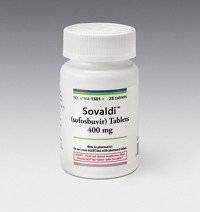Advertisement
Grab your lab coat. Let's get started
Welcome!
Welcome!
Create an account below to get 6 C&EN articles per month, receive newsletters and more - all free.
It seems this is your first time logging in online. Please enter the following information to continue.
As an ACS member you automatically get access to this site. All we need is few more details to create your reading experience.
Not you? Sign in with a different account.
Not you? Sign in with a different account.
ERROR 1
ERROR 1
ERROR 2
ERROR 2
ERROR 2
ERROR 2
ERROR 2
Password and Confirm password must match.
If you have an ACS member number, please enter it here so we can link this account to your membership. (optional)
ERROR 2
ACS values your privacy. By submitting your information, you are gaining access to C&EN and subscribing to our weekly newsletter. We use the information you provide to make your reading experience better, and we will never sell your data to third party members.
Pharmaceuticals
Substance Abuse As A Chronic Disease
Addiction treatment expert champions use of drugs to treat drug abuse
by Rachel Petkewich
June 19, 2006
Ten years ago, psychologist Richard Rawson, an associate professor in the psychiatry department at the University of California, Los Angeles, received an invitation from the State Department to work on a project in the Middle East. Israelis and Palestinians wanted to learn more about research and treatment for drug abuse.
In addition to continuing work in Egypt, Israel, Palestine, and South Africa, Rawson's group recently received a contract from the United Nations Office of Drugs & Crime to set up 20 centers around the world and develop the curriculum to educate professionals about substance abuse.
The psychosocial behavior treatment methods developed over the past 50 years in the U.S. to deal with various addictions are not considered realistic or cost-effective in many parts of the world, Rawson explains. "Much of the rest of the world's substance abuse treatment is done in primary care settings, and they are looking for medications."
"Probably the most significant development in drug treatment worldwide right now is the implementation of medications for heroin addiction to reduce the spread of HIV/AIDS and other blood-borne diseases" explains Rawson, a veteran of various National Institute on Drug Abuse committees. At present, methadone and buprenorphine are available for heroin and other opiate-dependence disorders. Naltrexone and acamprosate work in alcoholism treatment.
About 20 years ago, around the time Rawson set up a nonprofit organization that now operates treatment clinics in southern California, medications for addiction were minimally used and ideologically unacceptable to many practitioners who advocated strictly behavioral therapy. Over the past two decades, science has shown that addiction is a brain disease and a chronic illness, much like depression or bipolar disorder, that cannot be cured but requires ongoing maintenance, he adds. "That's a big change, and it's going to put medications front and center as major components of future treatment plans and systems."
Unfortunately, few medicines are currently available to help treat addictions, and drug companies show little interest in putting forth additional products. "The big gap right now is in the area of stimulant use disorders—namely, cocaine and methamphetamine," says Rawson, who is also the associate director of UCLA's Integrated Substance Abuse Programs, a research, treatment, and training endeavor.
Researchers have searched for a decade for medications to treat methamphetamine addiction and twice as long for drugs to treat cocaine addiction. Bupropion, a drug that's used to treat depression and cigarette smoking, may have some value for both cocaine and methamphetamine addiction, but no definitive trials are complete, he says.
"I think one of the real challenges has been getting pharmaceutical companies interested in this market, because they view the drug-dependence market as relatively small, and some previous attempts haven't gone well," Rawson says. An estimated 15 million Americans abuse or are dependent on alcohol, he says, which sounds like a big market, but they don't all line up for treatment.
Image is another battle that pharmaceutical companies face. For example, methadone is perceived as "what junkies take," so even though it effectively eases chronic pain, some patients don't want the stigma of taking methadone, Rawson explains.
Many people in the U.S. criminal justice system, which deals with a large concentration of people who have substance-use disorders, remain skeptical about using drugs to treat drug addicts. U.S. prison treatment is all therapy-based, mostly aggressive group therapies to break down a person's resistance to change and to teach recovery skills, Rawson explains. "That method is called a therapeutic community, and while it is useful for some, there are many individuals who do not comply with the necessary post-prison recovery therapy." He hopes models successful in other countries will help change those practices.
Compounding the drug-dependence problem in criminal justice system worldwide is the sharing of hypodermic needles. Drugs often are smuggled into jails, but an adequate supply of syringes is not available, Rawson says. Prisons in which needle sharing is epidemic can become major settings for transmission of HIV and hepatitis C.
Iran has had a major breakthrough in public health by giving methadone to heroin users in prison, and the country's model is the best practice for training around the world now, Rawson says. "In Iran, methadone is not presented as a treatment for heroin addiction; it is presented, effectively, as an HIV prevention medicine. Policymakers appear willing to approve methadone for reducing HIV transmission, even if they are skeptical of its use for treating addiction."






Join the conversation
Contact the reporter
Submit a Letter to the Editor for publication
Engage with us on Twitter